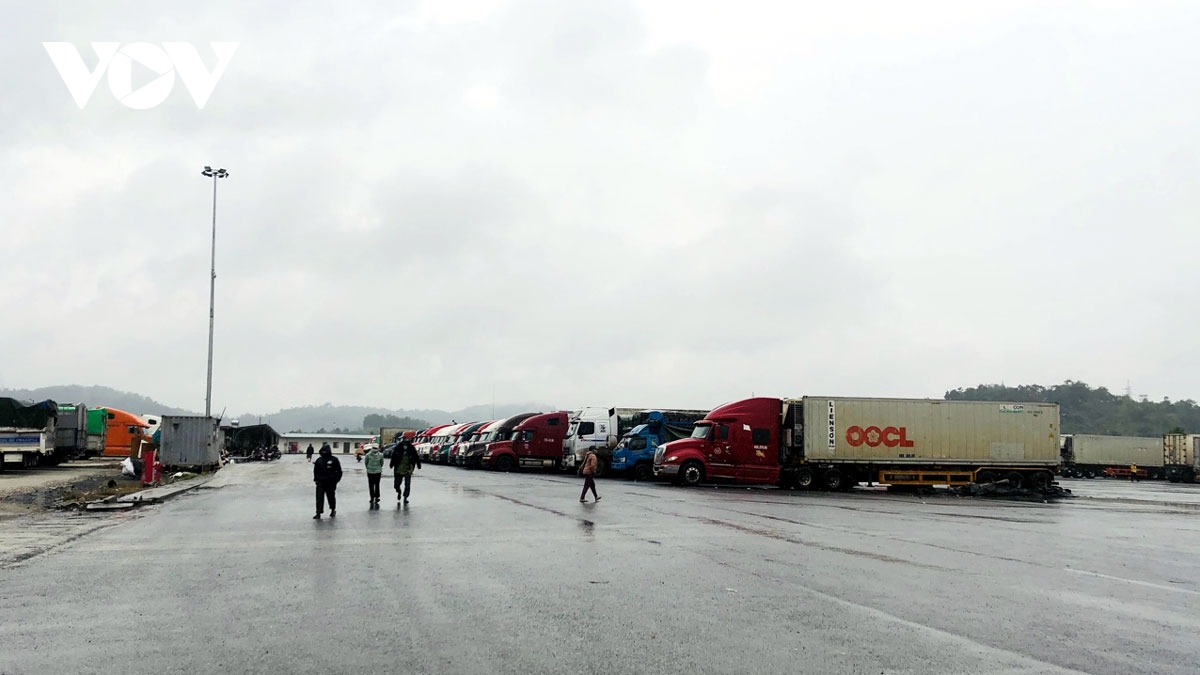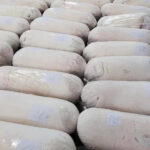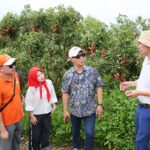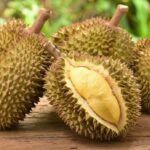Trade promotion (TP) and export-import development in the Northern mountainous midland region (Region) is a central task, aimed at boosting TP activities, linking production, connecting supply and demand, promoting the image and brands of the Region’s industries and products. This supports enterprises in effectively exploiting the FTAs that Vietnam has signed to develop products, diversify markets and supply chains, and boost exports and imports.

Lao Cai strives to invest in infrastructure, especially transportation infrastructure and border gate economic zones
As a gateway and a bridge for international trade and economic exchange, in recent years, Lao Cai province has strived to invest in infrastructure, especially transportation infrastructure and border gate economic zones. This has basically met the need for transporting export-import goods. Mr. Hoang Quoc Khanh, Permanent Vice Chairman of Lao Cai Provincial People’s Committee, said that increasing trade connectivity and developing border gate economy in Lao Cai has achieved certain successes.
“Lao Cai has exported a large volume of key agricultural products and fruits; import-export services have developed in a diversified way and their quality has been increasingly improved. However, the decreasing consumption demand in many countries and major partners, difficulties in production and business activities, and disruptions in international supply chains have interrupted trade and strongly affected import-export activities in Lao Cai,” said Mr. Khanh.
Despite many achievements and a relatively high growth rate, according to Mr. Bui Huy Son, Director of the Department of Planning and Finance (Ministry of Industry and Trade), the linkage between production and consumption of goods among localities in the Region is still scattered. Many provinces in the Region are located along the border, which is both an advantage for development and vulnerable to external factors such as smuggling, trade fraud, and adverse impacts of border gate economic activities. “Commercial infrastructure in the Region is slow to develop. The system of supermarkets and shopping centers is unevenly distributed, mainly concentrated in localities with developed economies,” said Mr. Son.

Many agricultural products from the Northern mountainous midland region are favored by domestic and foreign consumers
It can be seen that in recent years, fruit trees in the Region have been planted according to VietGap and GlobalGap standards, which have gained favor with foreign consumers and currently hold a large market share in Asian and African markets.
Based on these strengths, Mr. Do Quoc Hung, Director of the Department of Asian-African Markets (Ministry of Industry and Trade) suggested that localities continue to promote the building of distinctive brands for potential products, coordinate with functional units of the Ministry of Industry and Trade to organize trade fairs and exhibitions introducing products in foreign markets.
“For the traditional market of China, it is suggested that localities organize annual trade promotion activities for potential products in provinces and cities with great potential such as Beijing, Hebei, Hunan, Shandong, Sichuan, etc. At the same time, they should study the possibility of cooperating with foreign enterprises in improving product designs and packaging to meet the criteria of each market,” said Mr. Hung.
Aiming to build Lao Cai Border Economic Zone into a modern logistics center, a true hub for trade and a transit area for export-import goods, Hoang Quoc Khanh, Permanent Vice Chairman of Lao Cai Provincial People’s Committee, said that Lao Cai will focus on completing detailed plans, building infrastructure for functional areas of the Border Economic Zone; investing in developing a modern and synchronous logistics infrastructure.
“The province will coordinate with Yunnan province (China) and the central ministries and agencies to actively study and establish border gate zones, industrial parks, cross-border economic cooperation models, and free trade. Lao Cai will publicize, transparent, and simplify administrative procedures; promptly handle difficulties and problems of enterprises; create a clean land fund to attract production of processed industrial products, high technology, and intelligent technology. At the same time, it will promote comprehensive digital transformation; maintain and improve the quality of trade promotion, investment, and tourism activities,” said Mr. Khanh.

Localities in the Region need to strengthen close collaboration to integrate potential products deeply into suitable supply chain and value chain models
To support and promote the Region’s transformation and development of trade promotion and export-import activities, Deputy Minister of Industry and Trade Phan Thi Thang suggested that localities in the Region strengthen close collaboration, unify, and jointly develop key potential products, thereby participating deeply in suitable supply chain and value chain models.
“Localities and enterprises in the Region also need to promptly update information about foreign markets to grasp consumer tastes, thereby adjusting products accordingly and enhancing their competitiveness. Enterprises must enhance their capacity to enter the big playground by connecting with foreign retail systems to bring local products into supermarkets,” suggested Deputy Minister Phan Thi Thang.
The total retail sales of goods and consumer service revenue in the Region during the period of 2021-2023 reached an average growth rate of 15.6%/year, ranking 4th in the country. Commercial infrastructure in the Region has received investment attention, and modern forms of goods distribution have begun to develop.
The system of supermarkets and shopping centers in the Region has increased rapidly, with 85 supermarkets and 29 shopping centers, along with the operation of over 15,000 traders engaged in e-commerce. Although the Region’s export and import is small, it has exploited the advantages of border trade and border gates; the Region’s export turnover has increased by an average of 14.9%/year, ranking 3rd in the country.












